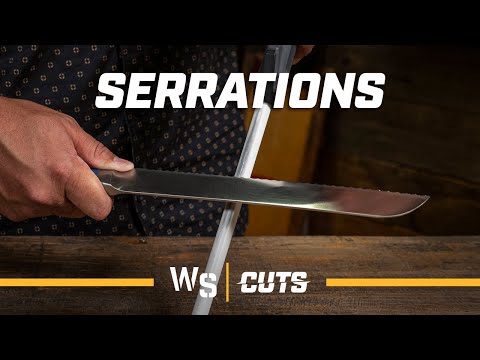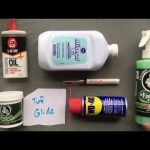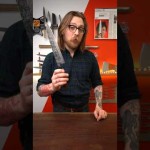
e817d90a843317eb361c16d0fb5a5a18
Having a sharp knife is essential for any kitchen task, from slicing vegetables to cutting meat. But when it comes to knives with serrations, sharpening them can be a bit more complicated. In this article, we’ll provide a comprehensive guide to sharpening serrated knives, so you can keep your knife sharp and ready for any task. We’ll cover the different types of serrations, the best tools and techniques for sharpening, and how to maintain your knife’s sharpness over time. With this guide, you’ll be able to keep your serrated knife in top condition for years to come.
What do serrations do on a knife
Serrations are a common feature on many knives, but what do they actually do? Serrations are a series of small, sharp teeth that are cut into the blade of a knife. They are designed to help the user cut through tough materials such as rope, leather, and even some types of wood.
Serrations are typically found on the back of the blade, near the tip. This is because the serrations are designed to help the user make a more precise cut. The serrations also help to reduce the amount of force needed to make a cut, making it easier to use the knife.
Serrations can also be used to help the user grip the knife more securely. The serrations provide a better grip on the blade, which can help to reduce the risk of slipping and cutting yourself. This is especially important when using a knife for tasks such as cutting rope or leather.
Serrations can also help to reduce the amount of wear and tear on the blade. The serrations act as a buffer between the blade and the material being cut, which can help to reduce the amount of wear and tear on the blade. This can help to extend the life of the knife.
Serrations are a great feature to have on a knife, as they can help to make cutting tasks easier and safer. They can also help to extend the life of the knife by reducing the amount of wear and tear on the blade. If you are looking for a knife with serrations, make sure to look for one with a good quality blade and serrations that are sharp and well-maintained.
Should you sharpen serrated knives
Serrated knives are a great tool for cutting through tough materials like bread, tomatoes, and meat. But, like any other knife, they need to be sharpened regularly to keep them in top condition. But should you sharpen serrated knives?
The answer is yes, you should sharpen serrated knives. Serrated knives are designed to stay sharp for a long time, but they will eventually become dull. Sharpening them will help them stay sharp and make them easier to use. It is important to use the right sharpening technique for serrated knives, as they are different from regular knives.
Sharpening serrated knives requires a special sharpening tool. You can buy a sharpening tool specifically designed for serrated knives, or you can use a regular sharpening stone. When sharpening serrated knives, it is important to sharpen each serration individually. This will ensure that the knife is sharpened evenly and that the serrations remain sharp.
When sharpening serrated knives, it is important to use a light touch. You should not press too hard on the sharpening tool, as this can damage the serrations. You should also sharpen the knife at a low angle, as this will help keep the serrations sharp. It is also important to sharpen both sides of the blade, as this will help keep the blade balanced.
Sharpening serrated knives can be a bit tricky, but it is important to keep them sharp. Doing so will help them stay in top condition and make them easier to use. With the right sharpening technique, you can keep your serrated knives sharp and ready to use.
Are serrated blades sharper
Serrated blades are a type of blade that has a saw-like edge. They are commonly used for cutting through tough materials such as rope, leather, and wood. But are serrated blades actually sharper than regular blades?
The answer is yes, serrated blades are sharper than regular blades. This is because the serrated edge has more cutting points than a regular blade. The serrated edge also has a greater surface area, which means it can cut through materials more easily. Additionally, the serrated edge is able to penetrate materials more deeply, making it easier to cut through tough materials.
Serrated blades are also more durable than regular blades. The serrated edge is able to withstand more wear and tear than a regular blade, making it a great choice for tasks that require a lot of cutting. Additionally, the serrated edge is able to stay sharp for longer periods of time, making it a great choice for those who need a blade that will last.
However, there are some drawbacks to using serrated blades. For one, they can be difficult to sharpen. The serrated edge can be difficult to sharpen, and it can take a lot of time and effort to get the blade back to its original sharpness. Additionally, serrated blades can be more difficult to use than regular blades, as they require more precision and skill to use properly.
Overall, serrated blades are sharper than regular blades. They are able to cut through tough materials more easily and are more durable than regular blades. However, they can be difficult to sharpen and require more skill to use properly. If you are looking for a blade that is sharp and durable, then a serrated blade may be the right choice for you.
Which is better serrated or straight blade
When it comes to knives, there are two main types of blades: serrated and straight. Both have their advantages and disadvantages, so it can be difficult to decide which one is better. To help you make the right decision, we’ve put together a guide to the pros and cons of each type of blade.
Serrated Blades
Serrated blades have a saw-like edge, with a series of small, sharp teeth. This makes them ideal for cutting through tough materials, such as rope, leather, and even bone. They are also great for slicing through food, such as bread and tomatoes. The downside of serrated blades is that they can be difficult to sharpen, and they can also be more prone to rusting.
Straight Blades
Straight blades have a smooth, single-edged blade. They are great for slicing through softer materials, such as fruits and vegetables. They are also easier to sharpen than serrated blades. However, they are not as effective at cutting through tougher materials, such as rope or leather.
Which is Better?
The answer to this question depends on what you plan to use your knife for. If you are looking for a knife to use for everyday tasks, such as cutting food, then a straight blade is probably the best choice. However, if you need a knife for tougher tasks, such as cutting rope or leather, then a serrated blade is the better option.
In the end, it’s up to you to decide which type of blade is best for your needs. Both serrated and straight blades have their advantages and disadvantages, so it’s important to consider your needs before making a decision.
We hope this guide has been helpful in teaching you how to sharpen serrations on your knife. Keeping your knife sharp is an important part of knife maintenance and can help you get the most out of your knife. Thank you for reading and we wish you the best of luck in keeping your knife sharp! Goodbye!







